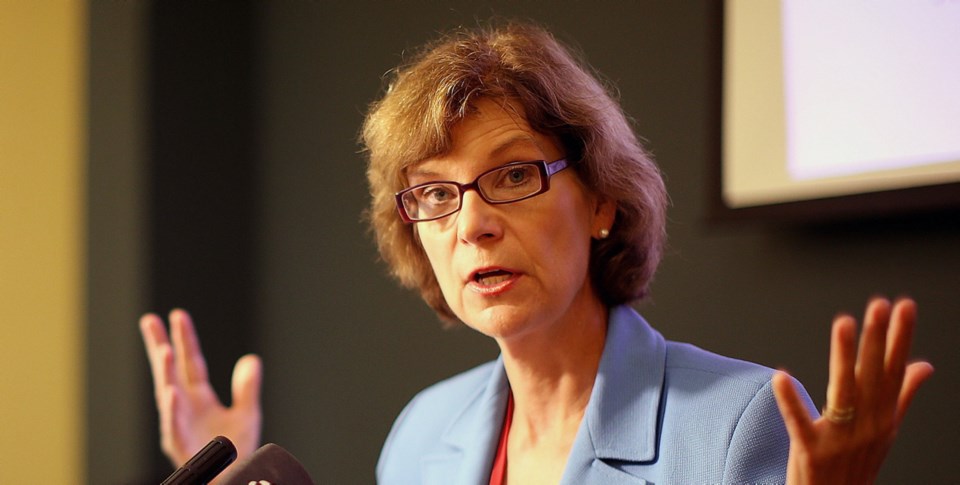B.C.’s seniors advocate is concerned that home-support clients and hours decreased rather than increased last year in the Vancouver Island Health Authority.
“I’m at a loss to understand why we would be seeing these decreases in clients and numbers of hours in a health authority where the senior population is growing,” said B.C. seniors advocate Isobel Mackenzie.
The statistics can be found in the seniors advocate’s annual report, Monitoring Seniors Services 2018, released last week.
On average, the Vancouver Island Health Authority provided the second highest number of care hours in 2017-18 — 277 per client per year.
However, the report also shows the health authority’s decrease in the number of home-support clients and hours of service to be among the most dramatic drops in the province.
“On a provincial level, the average hours that people got went up,” Mackenzie said. “That didn’t happen in VIHA. The average number of hours went down and the number of people receiving care went down.”
Clients receiving home care were down 2.8 per cent and total hours of home support delivered were down six per cent from the previous year.
Those are significant declines, said the seniors advocate.
In B.C., the number of seniors receiving home-support service decreased by 1.4 per cent despite a four per cent increase in the population over age 65 and a five per cent increase in the population over 85.
Twenty-four per cent of people within the Vancouver Island Health District are 65 years or older — the highest proportion in the province.
“The reduction in home-support clients is puzzling, as we should be seeing these numbers increase,” Mackenzie said. She hopes that recent funding increases by the province for home and community care will be reflected in next year’s report.
Island Health attributes the decreases to a variety of factors, including data discrepancies, efficiencies and new assessment tools.
Norm Peters, executive director of surgery, ambulatory and regional services at Island Health, said the health authority pays a lot of attention to the advocate’s reports.
“We, too, were wondering why we were seeing that decrease,” Peters said. “We’re now looking at why there’s such a significant discrepancy between the hours that we report and what she based her findings on.”
The health authority maintains more of its assisted-living hours should be counted as home support, but Mackenzie said it’s not done that way in other health authorities
Island Health says that, historically, it has a higher utilization of home-support services in comparison with other health authorities
Also at play, Peters said, is that the health authority is focused on developing “neighbourhood models of care.” It is a model where community health workers are grouped with several clients. The goal is to reduce the number of workers a client would see in a given week, for example.
Peters said the result is more visits but fewer hours of service because of the efficiency of the program.
As for the Adult Day Program for seniors, the number of clients and days offered is also down in the province, said the report.
“The ADP numbers are very concerning,” Mackenzie said. “However, the recent announcement by the provincial government for $75 million targeted to ADP and respite will, hopefully, have an impact.”
In VIHA, the number of clients attending adult day programs decreased by 1.3 per cent. There were 102 clients waiting for additional days as of March 2018, the second highest number of clients waiting in the province, according to the report.
Island Health is in the process of putting out a request for proposals to expand the number of adult day program hours it provides in Greater Victoria, Peters said.
“Going forward, we are working with the Ministry of Health to strengthen senior services across the Island,” said the health authority in a statement.
“With additional funds for home support from the provincial and the federal governments that were announced in 2018, Island Health has increased its recruiting efforts and is hiring more staff. We expect with those investments that there will be an increase in the number of home-support hours.”
Peters said his greater concern is that possibly there are people not accessing the home support and community-care services available.
Peters said only about eight to 15 per cent of seniors showing up in their emergency rooms have first accessed home and community care. “We’d like to see the number of people supported by home and community care increase,” he said.
“If we can reach out and encourage people to get care sooner rather than later, that would be important,” he said. “We want to see the number of people accessing our services continue to grow and put structures in place that help make it easier for people to access our services.”



